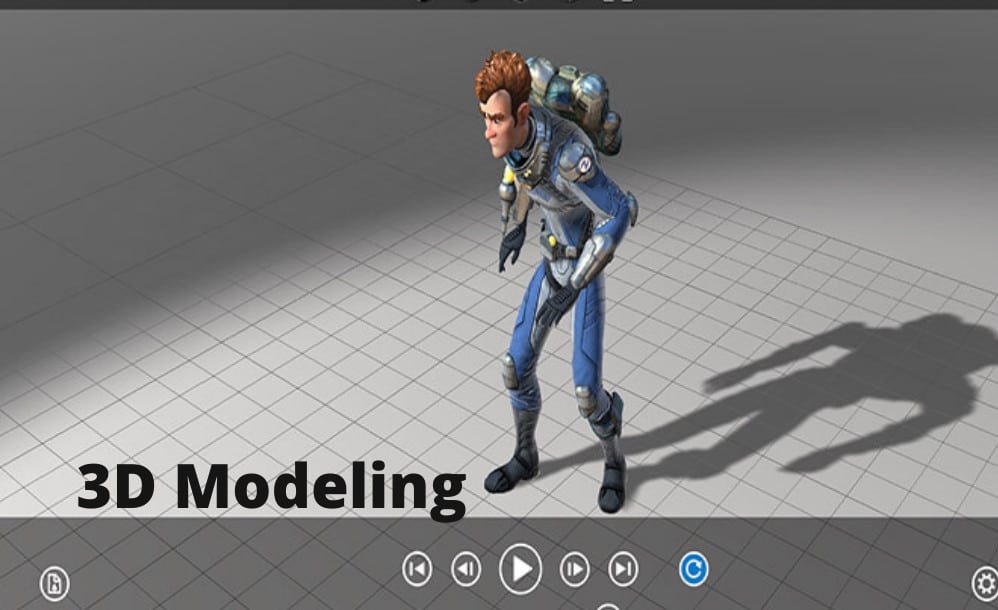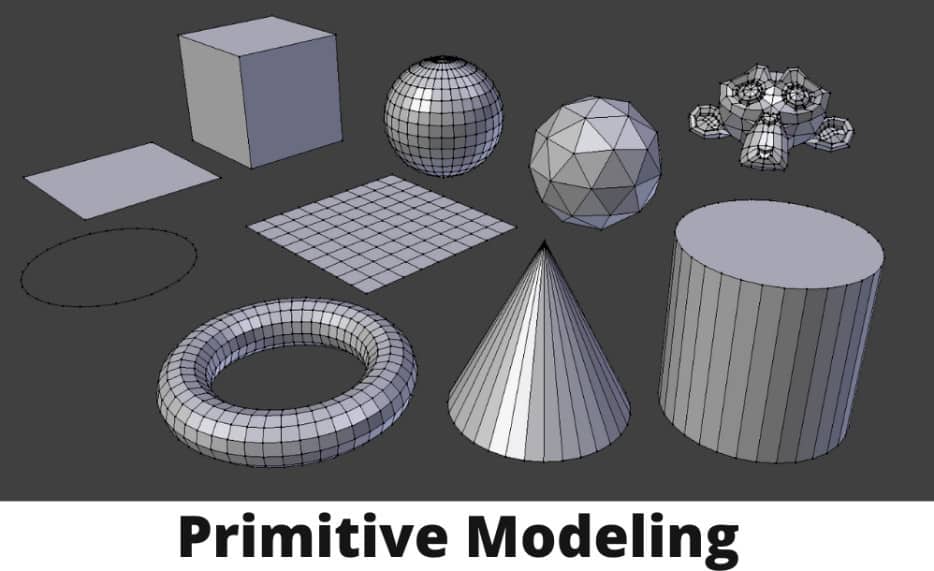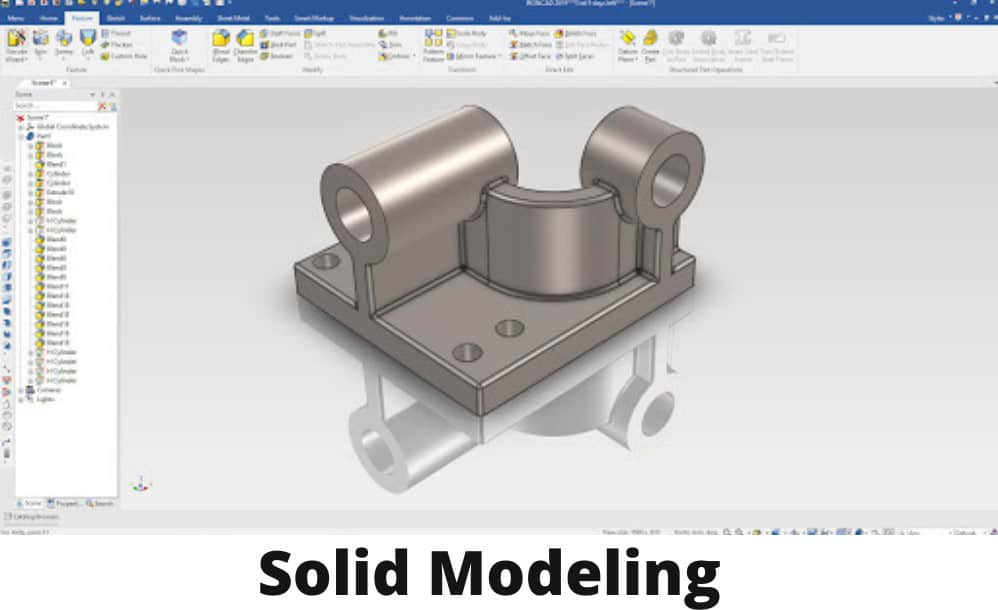
3d modelling is changing how we see and visualize the design and geometric structures interactively. With the surge in demand for personalized products and designing, 3d modelling is bringing a paradigm shift.
From creating architecture models to figurines for animation movies and construction models — 3d modelling streamlines the complex process of informative visualization. It is a method of creating 3d graphics, and there are multiple types of 3d modelling techniques and software to turn an idea into an attractive 3d model.
Creating a 3d model involves various steps, including sculpting, texturing and designing workflows. Using a 3d modelling software, engineers can quickly draft a design and create a full-fledged model to understand product aesthetics and dimensions better. 3d modelling is a complex and time-consuming process, and several industries use this technique to meet their pre-production requirements.
Where are the 3D CAD Models used?
Several industries, including automotive, architecture, aerospace, and consumer products, use 3d CAD solutions to create new designs and geometries. Below are some of the critical applications of 3d modelling:
In animated movies
Designers use 3d modelling to create compelling characters that we see in animated movies and video games. Animated character creation is a complex process, and to ease it, designers first draft a 3d model and then start forming the characters using animation software.
Creating product designs
Traditional methods can’t integrate necessary detailing into a product during the design process. To overcome these challenges, manufacturers opt for 3d modelling to design information-rich 3d models to visualize their product comprehensively.
A CAD modelling company helps manufacturers by creating multiple iterations of the main design. It lets the product companies pick the most efficient design in a shorter lead time.
Developing bespoke products
The medical industry is flourishing with additive manufacturing as it’s helping doctors create personalized prosthetics according to patients. To make this advancement happen, designers study the patient’s requirements and create a fully bespoke solution for maximum comfort and durability.
From custom implants to personalized prosthetic, 3d modelling collects critical patient data to form the ideal prosthetic solution. Several 3d product design companies are closely working in the medical domain to improve the efficiency of prosthetics.
In fashion industry
The use of 3d modelling is booming in the fashion industry, and designers are trying 3d printing technology to print complete dresses. From designing fashion accessories to garments — 3d modelling lets designers push traditional boundaries and go beyond expectations.
Architecture structure rendering
With the growing trend of contemporary architecture designs, engineers are leveraging 3d modelling to render their 2d plans into full-fledged models. With these 3d models, customers can explore their under-construction property in a much informative way.
How to create a 3d model?
Be it manufacturing, automotive or animation industry, designers need 3d software to create an STL file that contains a substantial list of coordinate points that forms a shape. Using a 3d CAD software, engineers can create coherent designs with intricate dimensions using a visual interface.
For avoiding design errors, the 3d software performs all complex calculations and creates an STL file with all the coordinates. There are several types of 3d modelling methods that designers can choose depending on the end product shape and aesthetics. Below are some of the most used types of 3d modelling:
Primitive modelling
Primitive modelling is the fundamental method for creating 3d models in which the process uses cubes, spheres and several variations of these shapes to form the final design. Several industries use this 3d modelling method to create designs from pre-existing dimensions and designs.
This 3d modelling uses fundamental Boolean processors to calculate and design accurate outlines and shapes. Boolean operators are the most employed ways to form 3d surfaces and custom shapes. Product designers can add or subtract multiple shapes to create a new object. Primitive 3d modelling is quite popular in consumer product manufacturing.
Polygonal modelling
This advanced method utilizes X, Y, and Z coordinates to form custom shapes and 3d surfaces to create a model. In this modelling process, all different surfaces combine to form a definite figure. In this method, engineers first use it to create a wire mesh in the required shape.
Polygon Modelling requires engineers to have good knowledge of how polygon mesh theory works in designing. Beginners need to do good practice to get product design right with accurate dimensions. This method is ideal for performing scanline rendering, which scans every row of the 3d model to generate the complete shape.
Rational B-Spline Modeling
It’s the most popular 3D modelling method, and it works by adjusting and combining geometric designs. In this method, the designer starts with drafting dimensions of each shape and the polygons are then twisted and curved to get the final design.
This method is popular because it’s easy to learn and hone, and even a beginner can start building 3d models using this. Rational B-Spline offers more flexibility to design models quickly using the integrated design elements.
Solid Modeling
The solid modelling method works with shapes like cubes, spheres, n-sided prisms and other crude forms. This technique is ideal when the basic bends or the flat surface is of consistent boundaries. This modelling method offers higher accuracy in angle measurement while drafting the design. Softwares like FreeCAD and Tinkercad utilize this method for creating 3d models. Solid modelling is easier to learn and practice than other modelling processes.
Wireframe modelling
In wireframe modelling, the shapes are in the work form of a network of vertices. In which every geometrical face is made with at least three vertices. Designers can change the size and state of things by altering the vertex positions.
In this method, the algorithm uses triangles as its core building component, and the aesthetics of the design improves when more triangle shapes are present in the structure. Some of the popular tools that offer wireframe modelling are Cinema 4d, Autodesk Maya, 3DS Max, and Blender.
Surface modelling
Surface modelling comes under the CAD design approach, and it can handle the designing of complex shapes. In this method, the algorithm defines the curvature and figures based on the pre-set guiding lines. This method is ideal for illustrating architecture renderings as it can integrate all essential elements into a single model. While designing a tangential plane, the software can also utilize control points and panels.
Surface modelling can produce highly intricate representations that are not possible by manual methods. Some popular programs that support surface modelling are Inventor, Solidworks, and Catia.




